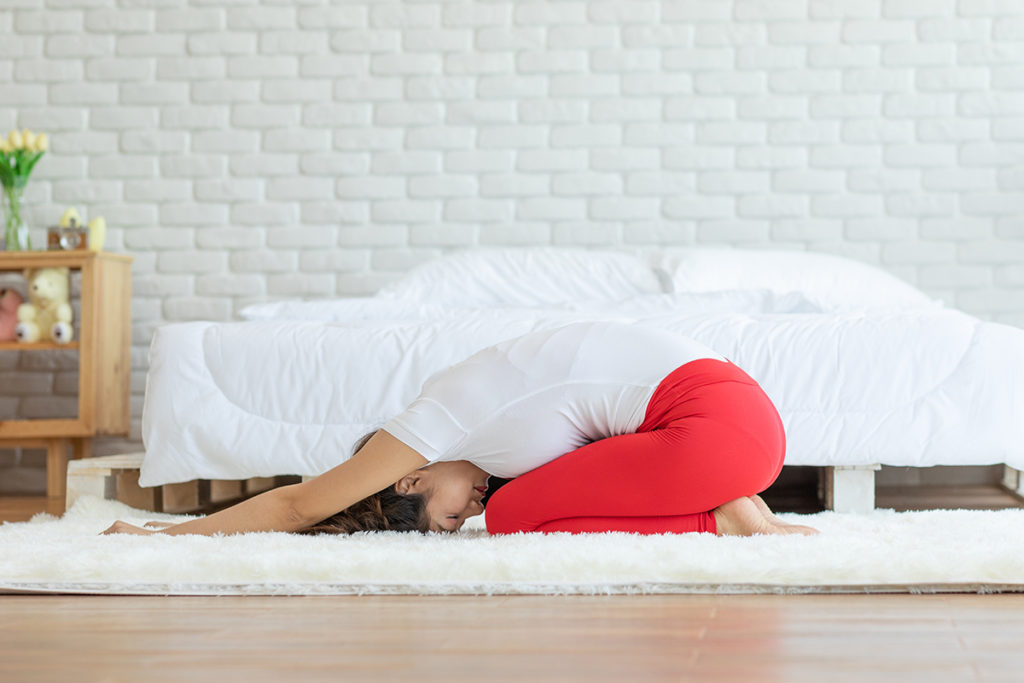Read the latest and greatest from our team
of incredible specialists.

Beach House Recovery Center » Blog » Before-Bed Yoga Stretches for a Restful Night’s Sleep
Sleep should be refreshing and restorative, but if you struggle to fall asleep and stay asleep night after night, you know how frustrating insomnia can be. Lying awake when the rest of your household is slumbering peacefully isn’t only annoying; it can also make you dread spending the next day groggy and sluggish.
With the onset of the COVID-19 pandemic, many more people are having trouble achieving restful sleep amid the disruption of their regular routines and the near-constant barrage of anxiety-inducing headlines. If sleep has eluded you lately, try adding these five exercises to your before-bed routine to wind down and set the stage to wake up invigorated.

Waterfall is a gentle inversion pose, stretching tight hamstrings and calming your central nervous system.
This before-bed yoga pose is ideal for relieving any stress you’ve been holding onto throughout the day.
Sitting for long periods can compress your spine and cause stiffness by the end of the day. If aches and pains often keep you awake, try a soothing spinal twist before bedtime.
Cobbler’s pose, also known as butterfly pose, opens the hip and groin muscles to counteract the effects of spending too much time sitting at a desk or in a car.
Throughout the day, many of us unconsciously store tension in our lower back and shoulder girdle. Child’s pose stretches both areas simultaneously, while opening the hips and providing an overall soothing effect.
Substance abuse can also contribute to a disrupted sleep schedule. To break the cycle, you need evidence-based treatment. You can learn more by reaching out to Beach House’s admissions team as soon as possible. Here, you can gain the life skills needed to live a healthy and rewarding life without drugs and alcohol.
Whether you’re researching for yourself or a loved one, Beach House can help. We understand that this is a serious time in your life and that the treatment center you choose matters. We want you to feel comfortable and empowered to make the right decision for yourself, a friend, or a family member. This is why a counselor is waiting and available to answer your questions and help put your mind at ease regarding the next steps. Many of the staff at Beach House have walked in your shoes. If you feel you’re ready or want more information about how to help a loved one, we can help today. You can also learn why we are voted the #1 rehab for addiction treatment in Florida.
We accept most major insurance plans and can verify your benefits quickly and confidentially.
We’re committed to helping you access the care you need, our admissions counselors can guide you through your coverage options and available resources.





"*" indicates required fields